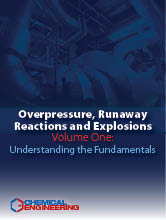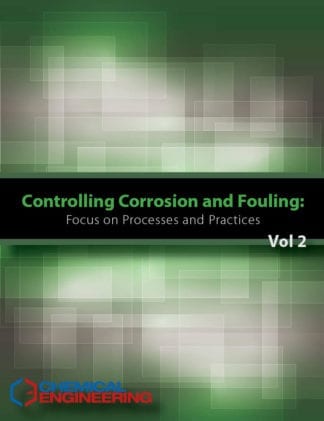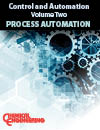Description
This Chemical Engineering guidebook contains dozens of practical, how-to engineering articles to better help you do your job. Contained in this volume are items addressing engineering challenges and solutions related to the prevention of overpressure situations, runaway reactions, plant upsets and potentially explosive operating conditions.
These tutorial-style articles focus on monitoring pressure in the chemical process environment, selecting and operating pressure-relief valves. Also provided are engineering recommendations for safely handling and storing reactive chemicals.
Several articles focus on the design and operation of explosion-protection devices and systems.
This guidebook is available in PDF format, 119 pages.
Articles Include:
A Checklist for Safer Chemical Batch Reactions
A good understanding of the reaction chemistry is needed for a safe process design
Runaway Reactions: Ignore the Chemistry at Your Peril
Proper hazards testing is key to ensuring chemical process safety
Facts at Your Fingertips: Avoiding Pressure Relief Problems
Facts at Your Fingertips: Dust Hazards
Facts at Your Fingertips: Causes of Overpressurization
Common Mistakes When Conducting a HAZOP and How to Avoid Them
An important part of ensuring the success of a HAZOP study is to understand the errors that can cause the team to lose focus
Evaluating and Reducing the Risks of Pneumatic Pressure Testing
In applications where pressure testing with liquids is undesirable, the risks of pneumatic pressure testing of pipes and vessels must be evaluated and minimized
Sizing Calculations for Pressure-Relief Valves
A universal mass-flux equation can improve sizing calculations for pressure-relief valves with non-ideal fluids
Effective Plant Safety Management
Three critical junctures and seven critical steps for plant safety are outlined
Get the Most out of Vibration Analysis
By listening to the messages your components are sending, you will be better able to assess the status of your machinery and take action to address problems
Aging Relief Systems — Are they Working Properly?
Common problems cures and tips to make sure your pressure relief valves operate properly when needed
Dust Control in the Chemical Processing Industries
The prevention of dust hazards in the CPI is integral to process-safety management — wide-reaching mitigation schemes must be implemented
Vapor Depressurization: Concept and Implementation
When carrying out depressurization calculations, special attention is needed for critical equipment and systems such as rotating equipment, columns and reactors
Combining the use of Rupture Discs with Relief Valves
Using the two devices together offers significant benefits in chemical processes. Here is how to take advantage of them
Materials Selection in the CPI
An overview of the many factors to be considered when selecting materials of construction
Advances in Process Temperature Measurement: Trends and Technologies
Process temperature measurement is a constantly evolving field, and new technologies have allowed for more reliable measurements to be realized in many applications
Prevent Combustible Dust Explosions with N2 Inerting
Targeted use of blanketing with inert gas offers an effective strategy for preventing combustible dust explosions in CPI facilities
Getting the Most Out of Your Rupture Disc
For optimum rupture-disc performance, pay attention to installation, operation and maintenance
Optimizing Pressure Relief Systems
Alternative designs for pressure relief systems may offer investment cost savings
Pressure-Relief System Design
Unexpected high pressure situations can be relieved with a proper relief-system design
Preventing Dust Exlposions
Risk management programs are critical for safe handling and processing of combustible dust as well as for OSHA regulatory compliance
Pressure Transmitter Basics: Selection Guidelines
Climbing the decision tree to pick the right pressure sensor
Reactive Chemistry in the CPI
Improper handling of reactive chemicals can result in catastrophic industrial disasters, and a clear understanding of these materials is essential for safe process-design practices
Size Safety-Relief Valves for Any Conditions
Before calculating the size of your safety-relief valve, make sure you understand the limitations of the methods available




